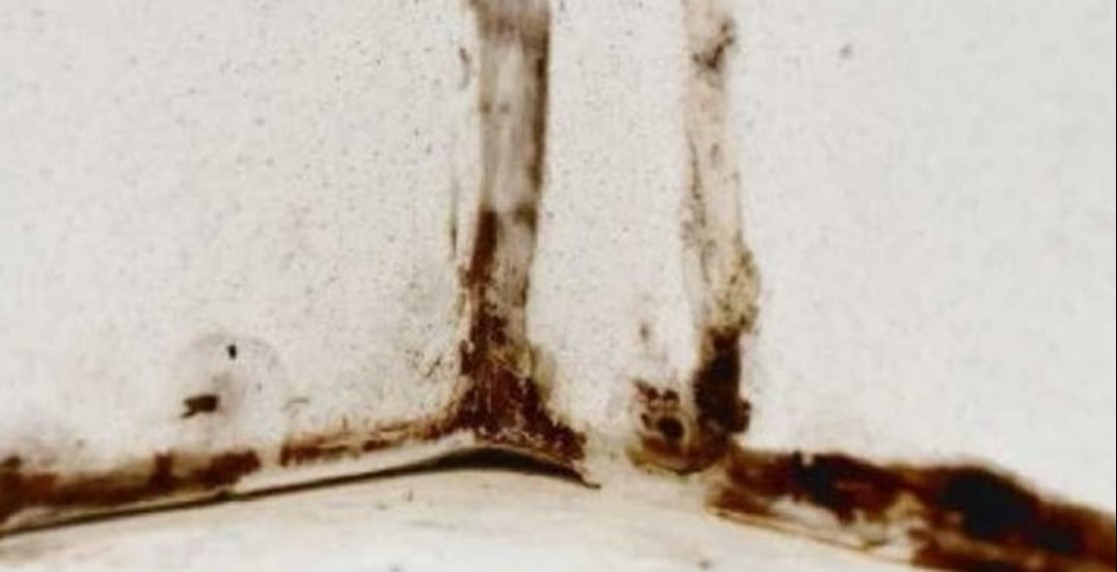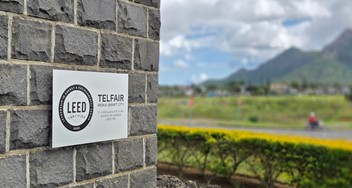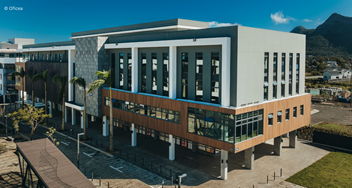Introduction
Mold and mildew growth in guests’ rooms is an issue in many hotels. Poor reviews of hotels abound on TripAdvisor on account of smelly rooms and visible signs of mold. It is a serious problem against which facilities managers have to struggle hard to avoid complaints from guests and possibly claims.
Mold and mildew need three conditions to grow; air (oxygen), water and food. Air is plenty in the room, water is coming from the humidity in the air and food is from the many organic matter found in the room; wood, paper, carpet, linen, fabrics, foam and the like.
Maintenance staff often leave rooms permanently air conditioned, even when unoccupied, to control humidity and the growth of mold and mildew. Besides consuming a large amount of energy, this solution does not resolve the problem in a sustainable manner if the cooling coil has not been properly selected. A careful design of the HVAC system during construction or a renovation is important to resolve this problem in a durable manner.
Mold growth
Molds can be found wherever there is moisture, oxygen, and something to feed on. In winter they grow on rotting logs and fallen leaves, especially in moist, shady areas. In gardens they can be found in compost piles and on certain grasses and weeds. Molds grow in moist warm areas like bathrooms and closets, even after the moisture has dried up. Molds can also grow in places where fresh food is stored, refrigerator drip trays, inside plants, carpets, mattresses, upholstered furniture. Polyurethane and rubber foams seem especially prone to fungus invasion.
The various places that molds can grow in hotels rooms are inside gypsum wall cavities in the ensuite, on ceiling tiles, plasterboards, wall papers, mattresses, upholstery, garment, cupboards and tiles grout.
Humidity and condensation formation
Mauritius has mild tropical maritime climate with two seasons: a warm humid summer from November to April and a cool winter from June to September. The month of May and October are considered as the transition months. Mauritius falls under climate zone 2B definition by ASHRAE. Humidity throughout the year is high with average relative humidity (RH) exceeding 80% most of the time in the coastal areas and with temperature ranging from 300C to 340C in summer. The summer months are generally more humid. For example, the RH was above 80% for 43% of the days in February 2013 and 22% in January in that same year. RH can be high in winter as well, with a peak value of 98% recorded in August 2013 (source: Mauritius Meteorological Services).
Controlling this level of humidity has been a challenge to HVAC engineers. Very often compromise has to be reached between occupants comfort and energy costs associated with dehumidification. Generally designers in Mauritius would set internal RH slightly higher than internationally recommended standards to reduce both initial and running costs, after consultation with their clients. In fact the need to control humidity in hotels has always been a subject of debate. The emphasis has been on achieving internal temperature rather than controlling humidity. Guests comfort has always been linked to internal temperature. This is mainly because guests are always aware of the internal temperature from the thermostat but are less sensitive to the humidity because generally no humidistats are installed in hotel rooms.
Talking to several maintenance managers on guests’ habits and usage of the HVAC system, I was told that guests tend to set the thermostat as low as it can go; 160C in most cases. Some leave the room AC on when they go out, often bypassing the key tag with other cards, carton or even metal pieces. With this setting, the room is very cold after some time and the internal surfaces as well. Hours later, the surface of the partition wall in the adjacent room also becomes cold because of the heat flow.
During summer the external air is very hot and humid with the dew point likely being above 240C. This air will condense on surfaces which are below this temperature inside the room. In fact internal surfaces like walls, plasterboards, picture frames, furniture, foam and polyurethane mattresses accumulate humidity every time the outside air enters the conditioned room or even the unconditioned adjacent room. This problem is common in many hotels in Mauritius and is particularly severe in those where the partition wall is in reinforced concrete because of the lower resistance to heat flow. The wall surface in the unoccupied adjacent room reaches the temperature of the occupied air conditioned room quicker.
With high room occupancies in the summer months, the condensation does not have time to completely dry up or be removed by flushing air movement from natural ventilation, because rooms are being constantly occupied, with the door closed. For security reasons, it is not possible to leave rooms open for a long time to allow flushing by natural ventilation. Coupled to that, the cooling coil also is unable to remove the humidity. The moisture is therefore trapped.
Some solutions
- Dehumidification via the HVAC system
One of the most significant causes of moisture accumulation in hotel rooms in hot, humid climate is an overemphasis on sensible cooling at the expense of latent cooling while selecting the room HVAC system. (The latent cooling load is the energy required to remove moisture from the air; the sensible cooling load is the energy required to cool the air.) As mentioned before, guest satisfaction has always been influenced by temperature and less so by humidity. HVAC equipment is typically more efficient in cooling air than in dehumidifying it. As a result, outside air brought into a room may be cooled to the desired temperature before it is properly dehumidified, creating elevated relative humidity levels and mold growth inside. Furthermore, because HVAC equipment is typically controlled by temperature (thermostat) instead of humidity (humidistat), the equipment never senses the elevated moisture level within the building space and, therefore, never fully removes it.
As most of hotel rooms in Mauritius are cooled by unitary or terminal equipment (fan coils, VRV, split units) rather than centralised air handling units, humidity control can be very challenging if the unit is not properly sized and selected. Very often contractors have only the total cooling load required and no information on the latent or sensible heat demand in the room. In such circumstances, the latter can wrongly order the cooling coil needed. This is because standard off the shelf cooling coils or standard catalogue products generally have sensible heat ratios ranging between 70% - 80% and which is much above the actual room sensible heat ratio in most situations in hotel rooms in Mauritius. (Sensible heat ratio is the ratio between the sensible heat load and the total heat load and characterises the dehumidification effectiveness of an air conditioning equipment). Let is illustrate this problem with an actual case study.
In 2014 we renovated a five star resort on the west coast of Mauritius and we have used the standard guests’ room for this study. We carried out all dynamic thermal simulations using hourly weather database from the Mauritius Meteorological Station for Port Louis, which is the nearest station to the hotel under study. (Database from Meteonorm was found not to be accurate for that region). A first dynamic thermal simulation was done using IESVE Apache Systems software to determine the peak cooling load inside the room and a second simulation to determine the resultant internal relative humidity in the room with a cooling coil selected. In all the simulations carried out, the shading effect of adjacent buildings, local shades and self-shading features were taken into account by doing a shading analysis using Suncast. A chilled water fan coil system was selected and the fresh air was being fed directly into the coils, without any pre-cooling. This is a typical scenario in many hotels in Mauritius.
Case 1- Using a fan coil selected with only the total cooling load information.
Using the peak total cooling load only (ignoring the total and latent heat load), a fan coil unit was selected from Aermec catalogue. Then the latent and sensible cooling capacities of the unit read from the standard sales catalogue was fed into an HVAC system defined in the Apache HVAC module of IESVE software. This step illustrates the selection of a cooling coil using only the total cooling load information, as contractors would do in such a case.
External conditions were provided by the weather database for Port Louis, as described above and set points were as follows:
- Internal temperature: 220C
- Internal relative humidity (RH): 65%
- Infiltration rate: 0.5 air changes per hour (ACH)
- Fresh air supply-30 l/s
The peak cooling load was calculated from a first dynamic simulation and was as follows:
Note: Peak sensible and peak latent load were non-coincident.
The model selected was an AERMEC unit with total cooling capacity of 4.42 kW which closely matched the 3.97 total cooling load demand. A second thermal simulation was run to determine the resultant internal RH with this fan coil installed inside the room.
The graph below shows the variation of daily average RH inside the room over a year. It is observed that the RH (in blue) exceeds 70% (red line) for most of the summer.
It is concluded, from the graph, that a standard cooling coil selected only on the basis of the total cooling load information cannot effectively control the humidity in the room.
Case 2- The situation with a higher actual air infiltration rate.
The infiltration rate of 0.5 air changes per hour (ACH) is the generally accepted design assumption in Mauritius. However the actual infiltration rate in some hotels are higher by virtue of their position, orientation and construction. In many beach resorts, for example, rooms are constructed in a linear stretch across the property and with the entrance door unshielded from the wind. This exposes the rooms to more wind pressure and therefore more infiltration.
In this case, we studied the effect of a higher infiltration rate of 1 ACH on the internal RH with the same fan coil as in case 1.
With an infiltration rate of 1ACH, the simulated cooling load demand was as follows:
- Room peak sensible load: 2.94 kW
- Room peak latent load: 2.28 kW
- Total cooling load: 4.4 kW
(Note: the peak sensible and latent load were non- coincident)
The total cooling load is now 4.4 kW compared to 3.97 kW in case 1.
The thermal simulation results for resultant internal RH with a higher infiltration rate and with the same fan coil unit, is shown in the graph below. We observed that the situation was worse, with the RH inside the room exceeding 70% for a longer period of the year than in case 1. The RH inside the room was high in the beginning of winter as well. This explains the actual case occurring in many hotels rooms in Mauritius, where the internal humidity is almost permanently above 70% because the fan coil unit cannot handle it.
Case 3- Selecting a standard fan coil to meet the total and sensible heat load.
In this case, we simulated the room internal RH still with a standard (off the shelf) fan coil unit selected using information on the total, sensible and latent cooling load available from the simulation in case 1. The internal and external conditions were set as in case 1 for the cooling load calculation with an air infiltration rate of 0.5 ACH. The unit selected was a standard Daikin unit 6.47/4.44/2.03 kW (total/sensible/latent cooling capacity) from the commercial catalogue which met the total, latent and sensible heat loads of 3.97/2.85/1.97 kW in the room. AERMEC units could also have been used but they were found to be too large for the room.
The result in the graph below shows that the RH inside the room is above 70% for a shorter period during the year. It was above the 70% line for some time during the transition months. This is explained by the fact that the actual room sensible heat ratio, which is the ratio of the sensible heat load to the total heat load, was lower than the fan coil sensible heat ratio during the times when the humidity was out of control. Despite being an improvement, the RH was still out of control for about 37% of the year.
Case 4- Using a custom built fan coil unit
In this case we have simulated the internal RH with a custom made fan coil unit, manufactured to meet the room cooling loads as in case 1. Custom built fan coil units are available when the detailed cooling loads are provided in the procurement document, where manufacturers are required to build them according to the sensible heat ratio provided. These are not off the shelf units, but made to order.
The cooling load inside the room used was the same as in case 1.
The custom cooling coil used in the simulation was one with 5.0 kW total cooling capacity, 3.0 kW sensible cooling capacity and 2.0 kW latent cooling capacity.
The internal daily average RH simulation results over a year is shown in graph 4 below. The RH for most time of the year is now below 70% and which shows that a fan coil unit customised to the room sensible heat ratio can better control humidity inside the room.
- Closer humidity control
Graph 4 also shows that fan coil units, even when custom built, cannot fully control humidity, as the blue graph is still above the red line for some time of the year. Obviously, it would be almost impossible to manufacture a unit which exactly matches the actual sensible heat ratio. Close humidity control can only be achieved by properly sized and selected air handling units which incorporate pre-cooling, cooling and heating coils.
It is also advisable to make the most educated assumption possible on the air infiltration rate inside the room during designing, based on the orientation, construction quality and exposure of the room. Even a custom built unit sized with an infiltration rate of 0.5 ACH will be unable to keep humidity low when the actual infiltration rate is higher, say 1 ACH.
The thermal simulations carried out are convincing enough to conclude that humidity, and therefore mold growth inside a hotel room, can be controlled by properly selecting the cooling coil. Designers must ensure that both cooling latent and sensible loads are provided to contractors during procurement.
However, a correctly sized coil can be bigger and noisier than a standard one and these must be must be considered early in the design process for services space planning inside the room.
- Fresh air supply tempering
External fresh air supply also brings in humidity. Fresh air supply in hotel rooms is a regulation requirement and is needed to remove carbon dioxide and other pollutants. The flow rate however varies among hotel operators. Whereas ASHARE design guide recommends 30 l/s per room, some operators specify up to 40 l/s of fresh air inside the room and which can be a significant source of humidity. Conventionally fresh external air is blown directly into the room or through the room cooling coil. When supplied through the cooling coil, it must be ensured that the latent and sensible heat load from this air stream is also accounted in the cooling coil selection.
The best way to control humidity from the external fresh air supply is to pre-cool it below the wet bulb temperature so that the moisture is removed. Reheating may or may not be required depending on the wet bulb temperature and the internally set RH.
- Air infiltration control
Infiltration of outside air into the room is another problem which must be tackled to avoid high humidity and therefore mold growth. It can also avoid high energy consumption. Designers usually assume infiltration rates of 0.5 air changes per hour in their cooling load calculations but if the actual infiltration is higher, the resulting humidity inside the room will be higher. This was demonstrated in simulation Case 2.
External air infiltrates buildings through cracks, around doors and windows which are not properly sealed, through vents and grilles. Infiltration can be controlled by positively pressurising the room. If the room pressure is higher than the external atmospheric pressure, air will rather exfiltrate the room than infiltrate. This pressure differential will largely depend on the amount of air being introduced in the room, the amount being extracted in the toilets and wind pressure on the facades, which in turn depends on topography, orientation, wind speed and several other factors. It is complicated to calculate this pressure differential because it is dynamic in nature as wind speed changes over the day and the year. Computational fluid dynamics software can be used to predict infiltration rates in buildings but is rarely used by designers. However as rule of thumb, extracting 80% of the outside air introduced in the room can significantly reduce infiltration.
Typical in hotels, toilet air extract is made up from the fresh air supply in the room. Usually fresh air is blown from the fan coil unit into the room and the toilet extract make up air is taken from a transfer grille on the ensuite door, which is very close to the entrance. This can create a localised negative pressure in the entrance lobby and draw in extra humid outside air around the door gap and undercut. To avoid this, the toilet makeup air grille must be located away from the entrance door, if possible on the wall facing the room for example. Alternatively the entrance door should be properly sealed to avoid infiltration from undercuts or gaps.
- Thermal barriers
Condensation rapidly forms on surfaces which are at a temperature lower than the dew point of the air. As explained earlier “sweating” of the floor and walls in conditioned rooms occur when doors are opened. Condensation also forms on the walls and floors of unoccupied rooms adjacent to occupied air conditioned rooms because the heat flow through the walls and in thermal bridges like gaps, cracks, beam edges and expansion joints. Sweating on floors above an air conditioned room can be avoided by ducting the return air to the fan coil rather than using the ceiling void as return plenum. This avoids the under face of the slab to be cold and consequently the floor surface in the room above.
Insulating the partition walls and eliminating all possible thermal bridges can stop condensation forming on wall surfaces in adjacent rooms. There are a myriad of low cost and acceptable insulating materials now on the market and architects should consider them in their design, with assistance of the HVAC engineer. This will reduce heat flow through the partition wall and therefore do not trigger condensation.
- Set back temperature
Another possible solution to reduce moisture accumulation in guests’ room is to set its temperature above the dew point of the outside air, when they are vacant. The dew point is easy to determine from the psychometric chart for a given climatic condition. For example the dew point of the external air can determined daily based on the prevailing outside relative humidity and the room temperature set one degree above. This will avoid condensation forming both inside and in the adjacent rooms. It would ideally be better to switch off the air conditioner but many hotels must keep the room to a setback temperature to avoid overheating and complaints from guests when they come back to their room. The setback temperature should be above the dew point to avoid condensation and moisture accumulation. This can be very easily implemented by the maintenance team through the BMS or centralised control system which comes with the HVAC system. External sensors can be installed to monitor temperature and humidity and these information fed to the central controller which calculates the dew point and automatically adjust the setback temperature inside the rooms.
Conclusion
Mold and mildew problems in hotels can be controlled by keeping the humidity away. Careful design of the HVAC system is necessary to keep humidity levels lower than 70% which is the threshold for mold growth. Designers should be apprised of this problem at the very early stage so that the solutions are approached in a holistic manner in the design and construction of the hotel.
References:
HVAC System Design for Humid Climates-by David MacPhaul, P.E. and Christy Etter, P.E.-CH2M Hill
https://en.wikipedia.org/wiki/Mold_growth,_assessment,_and_remediation
http://www.epa.gov/mold/moldresources.html
WHO guidelines for indoor air quality: dampness and mould-World Health Organisation-Denmark-2009
(http://www.euro.who.int/__data/assets/pdf_file/0017/43325/E92645.pdf)
ASHRAE Guide for Buildings in Hot and Humid Climates, American Society of Heating, Refrigerating, and Air-Conditioning Engineers, Atlanta, 2008
Acknowledgement:
Professor Malcom Cook, Associate Dean – Research, School of Civil and Building Engineering Loughborough University, Leicestershire, LE11 3TU
About the Author:
Mr Vikramsing Bhujun
Managing Director





